In Mohatta’s rooms, many a textured splendor unfurls
Breathtaking exhibition brings together traditional textiles from Waziristan to Sobho Dero
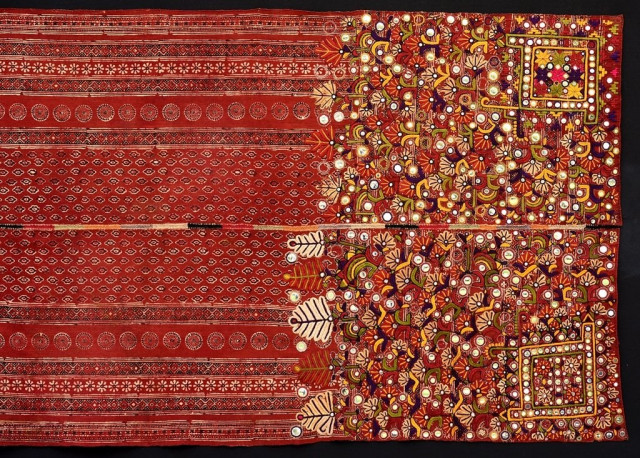
A man's ceremonial shawl or obechan from the Meghwars of Virawah, Nagar Parker, Sindh. It has flower beds at the corner with gamboling peacocks to symbolise fertility. PHOTO: Mohatta Palace Museum
These traditional and ceremonial garments are brought together with 100 others in Mohatta Palace Museum’s 20th exhibition ‘A Flower from Every Meadow’ curated by its director Nasreen Askari. The press was given a preview on Monday and the exhibition opens to the public on June 10. It is expected to run a few months and include workshops such as ajrak-making.

Work by Faiza Samee in traditional embroidery for the exhibition A Flower from Every Meadow at the Mohatta Palace Museum opening June 10. PHOTO: EXPRESS
The exhibition is organised in stages. It starts with the work of master craftspeople who give Pakistan its ajrak, bandhani, chunri. You will see the block and resist printing work of Shafiq Soomro, who acquired the name balti for carrying as many buckets of ajraks printed the night before down to the river to wash as immersion and sunning is a crucial part of the process.
From the work of the master craftspeople, the exhibition opens into the woven fabric. The geometric khes figures prominently here and particularly fetching are the pieces from the north where woolen garments are decorated with spots, squares, columns, rams’ horns. This part of the collection also features the flat weaves from Balochistan where sheep’s wool is used for felts for floor spreads, horse and camel blankets, bags and hats. Woven fabrics include the lungis from the collection of the Khan of Kalat which were probably woven in Thatta in the early 20th Century.

A khes from Nasarpur or Multan. The cities of Gambat, Nasarpur, Chiniot, Sargodha and Multan continue as the best known weaving centres for khes today. Additionally, in central Sindh, pit looms are found in every house in Sobho Dero, a hamlet of traditional weavers, due to the patronage of the Amirs of Khairpur. PHOTO: Mohatta Palace Museum
From woven fabric, the exhibition moves into the embroidered ones. Here you can see doch pieces from the Akram and Sabiha Dost Baloch collection. They include the jeeg or yoke which forms part of a Baloch woman’s shift.

A woman's shawl or ludi from the Kutchi Rabari group, Dano Dandhal village, Nagar Parker. Ludi is usually a black woolen shawl that Rabari girls embroider for their trousseaux. Its ends have medallions and stylised renditions of yellow mimosa blooms and mango trees. PHOTO: Mohatta Palace Museum
And in order to show how tradition has continued through the ages, Mohatta Palace Museum asked nine of Pakistan’s well known designers to contribute works inspired from the traditional pieces on display. They include Bunto Kazmi, Faiza Samee, Nilofar Shahid, Maheen Khan, Rizwan Beyg, Sonya Battla, Shamaeel Ansari, Sana Safinaz and Khaadi.

A koti and dupatta from the collection of the Nawab of Bahawalpur. PHOTO: Mohatta Palace Museum
Mohatta Palace Museum is open Tuesday to Sunday from 11am to 6pm.

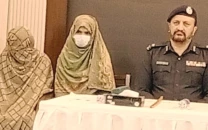


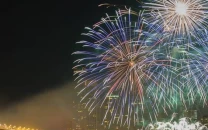

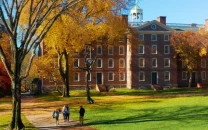




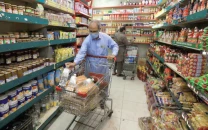






COMMENTS
Comments are moderated and generally will be posted if they are on-topic and not abusive.
For more information, please see our Comments FAQ